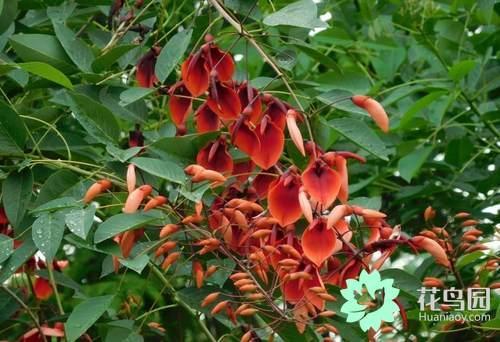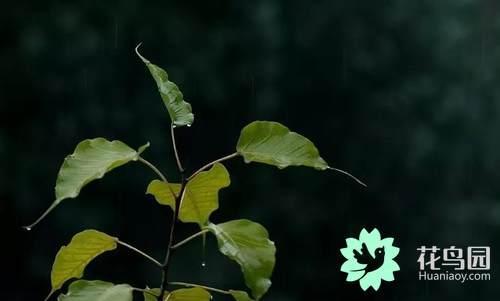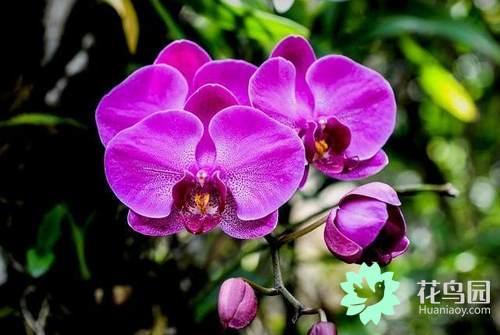Cultivation techniques of Caulownia frutescens

Chicken crown paulownia, because the shape is similar to the chicken crown, hence the name "chicken crown paulownia". Deciduous shrubs or small trees. The flowering period of Caulownia frutescens, which grows in China, is about April to July, and the flower is red when it blossoms, and the flowering period is long, so it is suitable for courtyard viewing and road greening. Its trunk thickness can reach 50 cm, the tree height is about 5-8 meters, and it can even grow to about 10 meters.
I. growth habits
Like light, but also resistant to mild shade, like high temperature, but have strong cold resistance. Strong adaptability, strong nature, drought tolerance and barren tolerance, but also resistant to salt and alkali, but not resistant to flooding. The requirement of soil is not strict, but the fertile loam or sandy loam with good drainage grows best. When potted in the north, it should be kept above 4 ℃ in winter. Cultivation does not choose soil, planted in full-day or half-day land can grow rapidly, the tree shape is smaller, suitable for street trees, prospect trees.
II. Water and fertilizer management
Organic fertilizer should be used as the main basic fertilizer before planting in spring. Replenish water in time after planting. After the planting survived, organic fertilizer was applied once a season and urea water and fertilizer was irrigated once a month to promote the growth of branches and leaves. After growing up, applying organic fertilizer or compound fertilizer once a year can ensure its normal growth. The natural branch of the trunk is low in the garden. The trunk can be cultivated as a small tree by wiping buds with a fixed stem.
III. Mode of reproduction
The main results are as follows: 1. Sowing and propagation; it is best to sow seeds with picking. At the beginning of summer, soak the seeds properly before sowing and sow them directly on the seedling bed. The loose sandy loam soil is suitable for the seedling bed soil, and the covering soil after sowing should be more than twice the height of the seeds. Pay attention to spraying water and moisturizing. The seedlings can emerge in about 10 days and transplant after 1 month when the seedlings grow to 20 cm.
2. Cutting propagation; cut off the semi-lignified branches, about 20-40 cm long, put them in a sand bed or loose seedling bed, keep them moist, take root and sprout in about 15 days, and become seedlings in 1-2 months. Long-branch cuttings are commonly used in coastal areas of South China, which can take root after 1-2 months.
IV. Main value
Chicken crown paulownia has strong adaptability, beautiful tree shape, simple trunk, numerous and gorgeous flowers, unique flower shape and long florescence, so it has high ornamental value. Planted on the lawn, it appears bright and dazzling. it is an excellent tree species for park, square, courtyard and road greening.
V. Disease prevention and control
Skin rot is a fatal disease, which is often mixed with bark beetle to harm the bark of the trunk, big branch, root neck and other parts of the tree. In the later stage of the disease, the bark of the injured part dried up, the phloem of the dead bark was separated from the xylem, and the bark was easily peeled off. When the diseased part surrounded the trunk or branch for a week, the upper part of the tree died.
Paulownia wasps should first remove rotten bark, spray medicine on the crown and trunk, spray pesticides on the trunk and wrap it. Secondly, the soil around the trunk was treated with sprinkler irrigation and comprehensive disinfection. Finally, the crown and twigs of paulownia trees with abnormal and swollen branches were comprehensively pruned, and the cut branches and leaves were centrally destroyed.
- Prev

Buddhism? Botany? Come and have a look.
The recently popular "Buddhist youth" must be very familiar with it. Do you know what "Buddhist plants" are? Today, the editor will take you to understand the real "Buddhist plants" ~ the Buddhist sutra stipulates that five kinds of trees must be planted in the temple.
- Next

The flowers are interesting and the flowering period is long. These flowers are really nice.
When it comes to flowers, we inadvertently reveal a lot of our own flower-growing experience, all kinds of flowers have their own unique characteristics, all kinds of flowers can make interesting gestures, different flowers also have different florescence, it is the difference of these flowers.
Related
- Wuhan Hospital Iron Tree Blooming Result Was Instantly Frightened by the Gardener Master
- Which variety of camellia is the most fragrant and best? Which one do you like best?
- What is the small blue coat, the breeding methods and matters needing attention of the succulent plant
- Dormancy time and maintenance management of succulent plants during dormancy
- Minas succulent how to raise, Minas succulent plant pictures
- What are the varieties of winter succulent plants
- How to raise succulent plants in twelve rolls? let's take a look at some experience of breeding twelve rolls.
- Attention should be paid to water control for succulent plants during dormant period (winter and summer)
- Watering experience of twelve rolls of succulent plants
- Techniques for fertilizing succulent plants. An article will let you know how to fertilize succulent plants.

